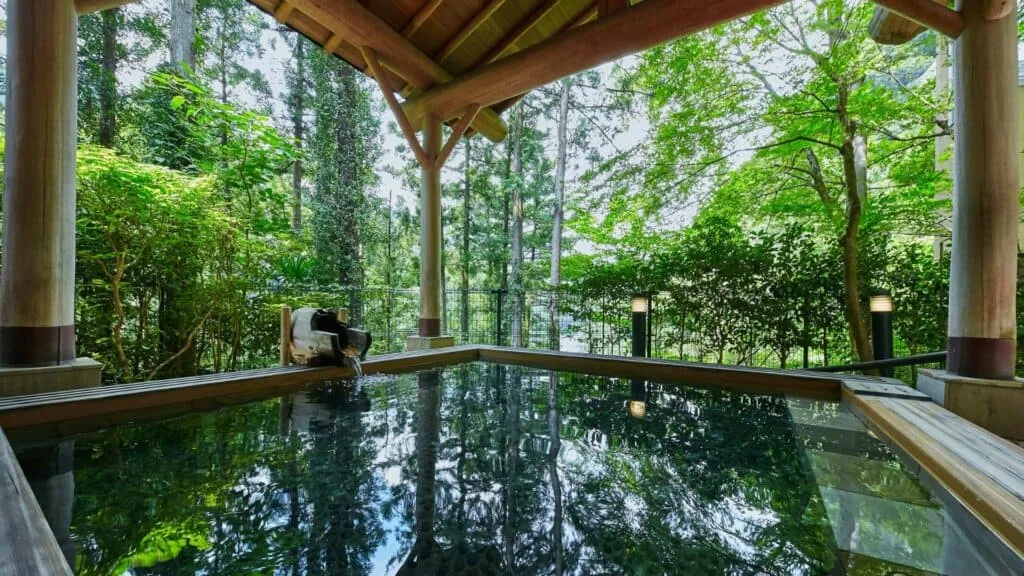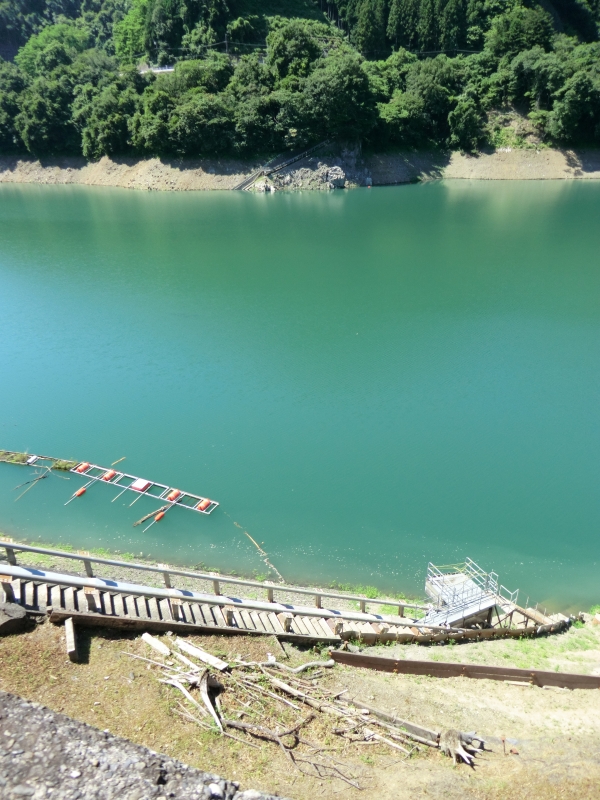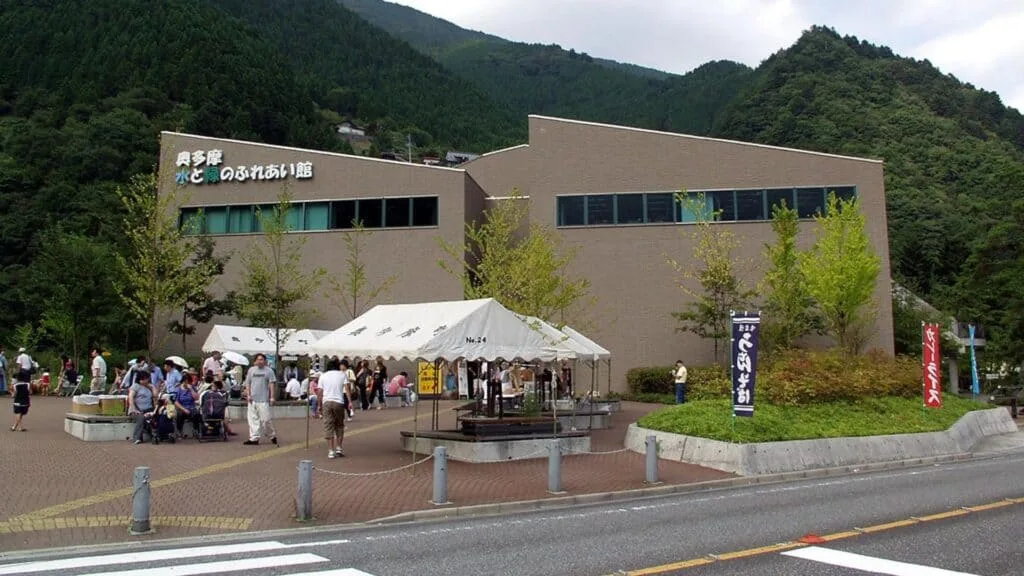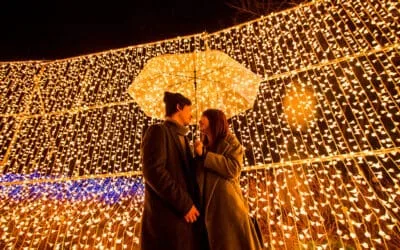Okutama is renowned for its vast wilderness, a magnet for outdoor enthusiasts seeking hiking and camping adventures. Yet, its expansive size can be overwhelming, leaving first-time visitors unsure of where to begin. Whether you’re planning a day trip or looking to stay overnight, this comprehensive guide aims to simplify your Okutama experience.
Explore the region’s top attractions, discover hidden gems, and find the perfect camping spot amidst nature’s embrace. From serene sightseeing spots to rugged trails, let’s uncover everything you need to know to make your Okutama journey unforgettable.
<!--One of the best ways to explore Tokyo is to visit the local areas and immerse yourself in the local culture. If you want to explore local areas, we have created scavenger hunt adventures personalised to your interests, filled with fun facts, clues and puzzles. If you’re curious, you can check out the games here! Check out the Flip Japan Games here! |
-->Things to Do in Okutama
Nippara limestone caves 日原鍾乳洞

Located in Nishitama County, the Nippara Limestone Caves are among the largest in the Kanto region and are designated as a natural monument by the Tokyo Metropolitan Government.
The caves maintain a cool temperature of about 11°C year-round, offering a refreshing escape in summer and warmth in winter. Visitors can immerse themselves in the breathtaking scenery and natural ambiance of Okutama.
Find out more about Nippara limestone caves here on Google maps.
Lake Okutama 奥多摩湖

Lake Okutama is a crucial water source, supplying approximately 20% of Tokyo’s water needs. It spans Okutama-cho, Nishitama-gun, Tokyo, and Tamba-mura, Kitatsuru-gun, Yamanashi Prefecture, officially known as the Ogouchi Reservoir.
Surrounded by mountains, it showcases vibrant seasonal views from cherry blossoms in spring to lush greenery, autumn foliage, and snowy landscapes. Two pedestrian-only floating bridges, popularly called drum bridges, provide picturesque viewpoints over the lake.
Find out more about Lake Okutama here on Google maps.
Hatonosu Canyon 鳩ノ巣渓谷

About two hours from Tokyo Station, Hatonosu Canyon offers a glimpse of Okutama’s untamed beauty. Nestled in the rich natural landscape, the canyon features a clear stream winding through towering stones and unique rock formations. It’s accessible via the Ome Highway, shortly after disembarking at JR Hatonosu Station.
The Otama Walking Trail, passing through Hatonosu Canyon, is a highlight for hikers, offering spectacular views from its suspension bridge during the seasons of new greenery and autumn foliage.
Find more about Okutama hike here!
Find out more about Hatonosu Canyon on Google maps.
Moegi no Yu Onsen 奥多摩温泉 もえぎの湯

Moegi no Yu Onsen provides a day of relaxation with 100% spring water sourced from Okutama’s Kosei formation, the oldest geological formation in Japan. Facilities include indoor baths, footbaths, and open-air baths with vistas of Okutama’s mountains, trees, and the crystal-clear Tama River. A restaurant offers local delicacies like Okutama Netsushin Udon, Soba, and grilled river fish, ensuring a full day of enjoyment.
Find out more about Moegi no Yu Onsen here on Google maps.
Mugiyama Floating Bridge 麦山浮橋

Mugiyama Floating Bridge spans Lake Okutama, a vital resource for Tokyo’s water supply. Known as the “drum bridge,” it’s a prominent landmark allowing pedestrians to traverse the lake on foot. Originally constructed with oil drums, today’s bridge is made from polyethylene and styrofoam, ensuring a safe crossing with minimal sway, suitable even for young children.
Find out more about Mugiyama Floating Bridge here on Google maps.
Okutama water and green Friendship Hall 奥多摩 水と緑のふれあい館

The Okutama Water and Green Friendship Hall offers insights into Okutama’s nature, history, water conservation, and dam operations through interactive displays and exhibits. Its panoramic restaurant overlooks Lake Okutama and the surrounding natural scenery, providing a perfect setting to savour local cuisine.
Find out more about Okutama water and green Friendship Hall here on Google maps.
Seseraginosato Museum せせらぎの里美術館
Set amidst Okutama’s natural beauty, the Seseraginosato Museum occupies a historic house from the late Edo period. It showcases paintings and traditional crafts by artists associated with Okutama, hosting special exhibitions throughout the year.
Find out more about Seseraginosato Museum here on Google maps.
Okutama Citizen’s Forest 栃寄森の家
Okutama Citizen’s Forest offers recreational activities and educational programmes focusing on forest ecology and sustainable forestry practices. Visitors can participate in mountain village walks, traditional Yamame fishing, forestry volunteer courses, and summer children’s events.
Find out more about Okutama Citizen’s Forest here on Google maps.
Gyokudo Art Museum 玉堂美術館

The Gyokudo Art Museum displays works by Japanese painter Gyokudo Kawai, spanning from his youth to old age. The museum, designed by Yoshida Gojuyachi, integrates elements of Hida architecture and temple cloisters.
Find out more about Gyokudo Art Museum on Google maps.
Waterfalls in Okutama

For waterfall enthusiasts, the Unazawa Three Waterfalls hiking course is a must. It features unique falls like the “Twist Waterfall,” “Mitsugama Waterfall,” cascading in three stages down moss-covered rocks, and the highest “Otaki Waterfall,” a stunning natural spectacle.
Nejire-no Waterfall ネジレノ滝
Nejire-no Waterfall, also known as “Twist Falls,” is surrounded by rock formations, resonating with the soothing sound of cascading water. Its distinct appearance, with twisted upper and lower segments, adds to its allure.
Find out more about Nejire-no Waterfall here on Google maps.
Otaki 大滝
Otaki is the tallest waterfall in the Umizawa Valley, dropping about 20 metres over various rock formations, creating a majestic cascade.
Find out more about Otaki here on Google maps.
Mitsugama Waterfall 三ツ釜ノ滝
Accessible via an iron staircase, Mitsugama Waterfall impresses with its three-tiered drop of approximately 12.5 metres, set amidst a spacious and picturesque environment.
Find out more about Mitsugama Waterfall here on Google maps.
Hyakuhiro-no-taki Falls 百尋ノ滝

Hyakuhiro-no-taki Falls, on Mt. , offers a grand view of a 40-metre drop waterfall, ideal for experiencing the awe-inspiring power of nature up close.
Find out more about Hyakuhiro-no-taki Falls here on Google maps.
Hossawa Falls 払沢の滝
Hossawa Falls, surrounded by dense forest, is divided into four tiers spanning 60 metres, particularly stunning during autumn foliage season with its vibrant hues reflecting off the cascading waters.
Find out more about Hossawa Falls here on Google maps.
Ayahiro Falls 綾広の滝
Ayahiro Falls, part of the hiking trails around Mitake Mountain, offers a serene atmosphere and is known for its annual Misonogi event at Musashi Mitake Shrine.
Find out more about Ayahiro Falls here on Google maps.
Camping in Okutama
Hikawa Camp site 氷川キャンプ場
About two and a half hours from central Tokyo, Hikawa Campsite immerses visitors in nature, surrounded by tall trees ideal for a forest bathing experience. It offers various accommodations, including hillside tent sites, lodges with amenities, and bungalows.
Find out more about Hikawa Camp site here on Google maps.
America Camp Village アメリカキャンプ村
America Camp Village features log cabins, barbecue rentals, a fishing pond, athletic facilities, and hiking trails. It’s a popular spot for both children and adults to enjoy activities like campfires and sports.
Find out more about America Camp Village here on Google maps.
Kawai Camping Ground 川井キャンプ場
Conveniently located near JR Kawai Station, Kawai Camping Ground offers riverfront activities such as fishing and barbecue, alongside seasonal programmes like trout fishing and baumkuchen baking. Nearby amenities include hot springs, supermarkets, and convenience stores.
Find out more about Kawai Camping Ground here on Google maps.
Restaruants in Okutama
Jinya陣屋
Jinya, near Lake Okutama, specialises in handmade soba noodles and local dishes made from ingredients sourced from the surrounding mountains. Open only for lunch, it offers a tranquil dining experience.
Find out more about Jinya here on Google maps.
Kamameshi Nakai 釜めし なかい
Kamameshi Nakai is renowned for its seasonal kamameshi dishes cooked with local ingredients, housed in a traditional Japanese-style setting amidst Okutama’s natural tranquillity.
Find out more about Kamameshi Nakai here on Google maps.
Beer Cafe VERTERE -ビアカフェ バテレ-
Beer Cafe VERTERE offers a variety of craft beers brewed with hops from Okutama and pure local water. Its menu includes dishes like fish and chips, perfect for pairing with their artisanal beers.
Find out more about Beer Cafe VERTERE here on Google maps.
Okutama Riverside Cafe Awa 奥多摩リバーサイドカフェ Awa
Riverside Cafe awa allows guests to enjoy meat dishes in a picturesque riverside setting, highlighted by their signature “Volcano” roast beef rice bowl with wasabi yoghurt sauce. Terrace seating is available, pet-friendly, and offers views of Okutama’s natural beauty.
Find out more about Riverside cafe awa here on Google maps.
Exploring the Rich Diversity of Okutama: Beyond Mountains and Lakes
When considering Okutama, many envision its iconic mountains and serene lake. While these are indeed standout features, Okutama offers a diverse range of experiences beyond these natural wonders. Whether you’re planning your next adventure or seeking new camping spots, this comprehensive guide provides ample inspiration.
Additionally, indulge in the region’s culinary delights, from local specialities to refreshing drinks, ensuring your visit to Okutama is as fulfilling as it is memorable.
When thinking about Okutama, a lot of people might be picturing the Okutama mountains and Okutama lake. Of course, these are part of the unique sights Okutama has to offer, but there are also a lot of other things to do in the Okutama area. Hope this list is able to help you figure out what to do on your next trip to Okutama, some camping ideas and delicious food and drinks options for you to try out.








